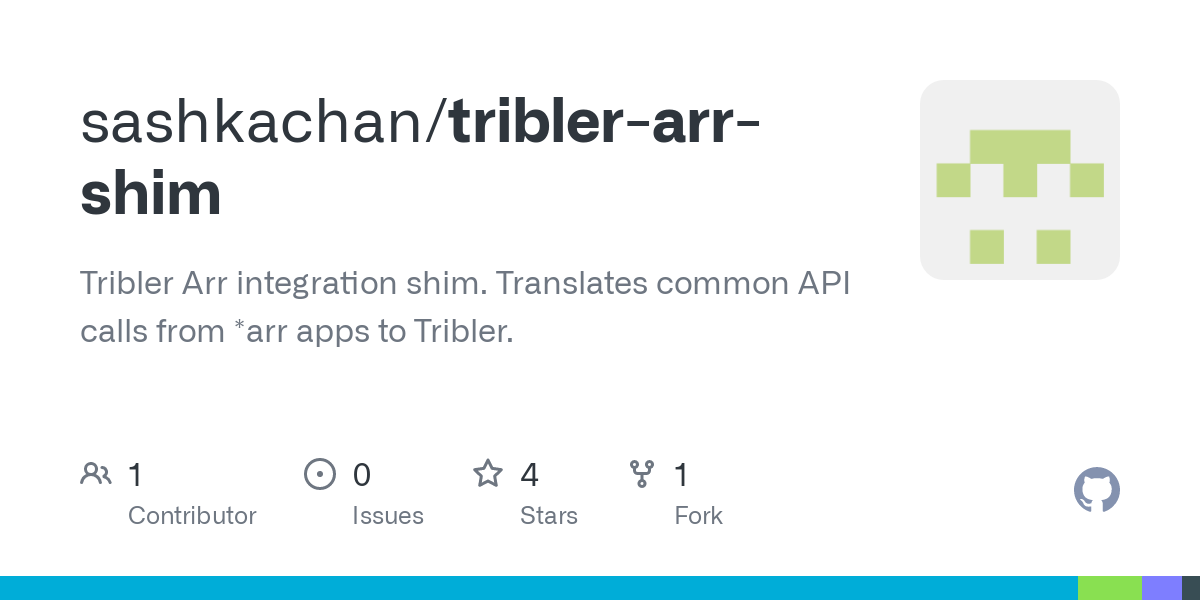- cross-posted to:
- selfhosted@lemmy.world
- cross-posted to:
- selfhosted@lemmy.world
cross-posted from: https://lemmy.ml/post/15808940
Tribler *arr integration
Hey selfhosters!
I recently discovered Tribler - anonymity focus torrent client. It made some rounds on hackernews and I’d never heard of it before.
I installed gui and was not impressed - it ran terribly on macos. However, I was able to test download and its anonymity features - it uses TOR inspired onion routing. I saw they had API available - and thought it would be perfect for my selfhosted *arr stack usage. However, *arr apps did not integrate tribler API (understandably, it’s a niche client)
I dug in a bit and thought it would not be so difficult to create a shim that pretends to be some better integrated torrent client.
I picked qbittorrent.
You can check the link. I run it in docker. Add it to sonarr / radarr as qbittorrent client (username and password is irrelevant, as tribler shim integrates with tribler through API key) It’s not the most secure approach - but managing torrents wihout authentication in my home network is an acceptable risk.
I was not able to download anything with more than 1 hops in between - ie it does hide your real IP address, but only uses one relay in between. It’s not perfect, but seems to work as designed. I run my services mostly in Kubernetes, so there’s likely something in my networking that. I will poke around more to see what could be the issue.
For now, the torrent management works through arr apps using the shim, however, the category is not implemented. Therefore, you can only use one category for both sonarr and radarr for example, and you will see downloads of both of those.



Are there any reasons why this wouldn’t be the next migration in p2p? Seems like a cool idea.
FOSS thrives in options, and that’s just great. There’s a compromise between security (i.e. anonymity) and convenience (i.e. speed). This tool focus on the security side. Meanwhile, seedboxes strike a good balance to both. That’s the current scenario, there are many ways to share. That diversity provides resilience to the communities ;)